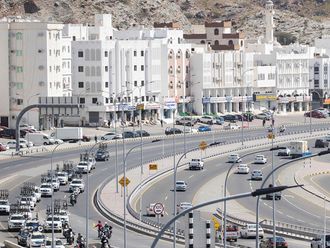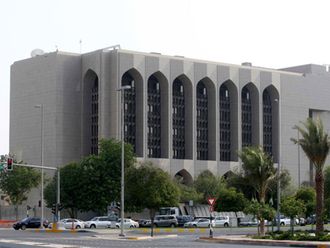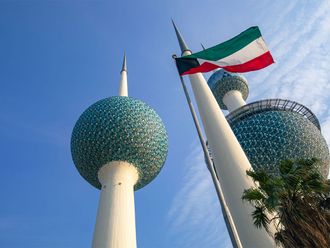Foreign investors are trooping back to Indian stock markets, betting Asia’s third-largest economy may be close to bottoming out from a slump in growth and a possible change of guard in New Delhi after general elections next year would likely throw up a market-friendly growth-focused government.
In 10 consecutive trading sessions to Thursday, the latest data available from the Securities and Exchange Board of India, deep-pocketed foreign funds bought shares worth a net $1.226 billion (Dh4.5 billion), signalling a sea change in sentiment among global investors who had shunned the country in the wake of the rupee’s slump to record lows in August.
“When large foreign institutional investors are willing to stake top dollars where their mouth is, it underscores a vote of confidence in the long-term strengths of a large developing economy,” said independent equity strategist V. Venugopal.
The buying, however, contrasts an economy still caught in the vortex of slowing growth and rising inflation pressures — a troublesome cocktail that many pundits believe could trigger another interest rate increase when the central bank reviews policy on October 29, a move that would further stall a recovery.
Annual inflation as measured by the wholesale price index accelerated to 6.46 per cent in September, the fastest pace in seven months, as prices of food items soared 18.4 per cent led by a four-fold jump in onion prices. This is worrisome for a nation of 1.2 billion people, a majority of whom are poor.
Consumer prices, which are now on the radar of the Reserve Bank of India (RBI), quickened to a three-month high at 9.84 per cent in September, and show no sign of easing despite a good monsoon which has bolstered the prospect for farm output.
On the other hand, economic growth has slowed to its weakest pace in a decade. Industrial output in August was a meagre 0.6 per cent. The World Bank on Wednesday slashed its forecast for India’s economic growth to 4.7 per cent in 2013-14 from its earlier projection of 6.1 per cent, citing sluggish manufacturing, investment and subdued business confidence.
“Economic activity is expected to pick up in the second half of FY2014, although the speed of economic recovery could be impacted by the country’s present vulnerabilities,” the World Bank said, adding it expected growth to pick up to 6.2 per cent in 2014-15.
A week earlier, the International Monetary Fund cut its forecast for India to 3.8 per cent in 2013 and projected 5.1 per cent growth for 2014.
Some economists say India’s high inflation and weak growth indicate features related to stagflation, a scary prospect for the $2 trillion economy. Still, the central bank will be under pressure to raise interest rates to cool inflation.
“The pickup in inflation is testament to the lingering inflation risks and underscores the need for the RBI to keep its inflation guards up,” Leif Lybecker Eskesen, chief economist for India & ASEAN at HSBC, said in a note.
Many economists expect the RBI to raise interest rates by 0.25 percentage point, which would be the second increase in as many months after Governor Raghuram Rajan in September reinforced the central bank’s primary focus was to quell prices pressures.
Fund managers at foreign asset management firms say they are looking beyond the gloomy data, which were mostly anticipated because of the policy paralysis and corruption scandals that gripped New Delhi for the past four years.
With general elections coming up next year, there is an urge for change among voters, according to a survey by the Economic Times. Narendra Modi, the prime ministerial hopeful of the opposition Bharatiya Janata Party, is way ahead in the ratings compared to Rahul Gandhi and others and is gaining ground in the crucial Hindi heartland states of Uttar Pradesh and Bihar, the influential newspaper said.
Modi, with his pro-business reputation, is a favourite of market participants, including foreign funds. It is this that has helped the widely-tracked top-30 Sensex gain 5.9 per cent over the past three weeks, bucking the subdued factory output, accelerating inflation, corporate earnings concerns and rate worries.
Bank of America-Merrill Lynch said historically Indian markets do well prior to general elections, running up big gains before turning nervous as the actual counting nears.
“In 6 of the last 7 elections, investors buying six months before elections and selling on the day before results would have seen positive returns. The average return has been 15 per cent,” analysts Jyotivardhan Jaipuria and Anand Kumar at the Indian affiliate of the US investment bank said in a note.
“Three sectors that have done well from 6 months before elections are autos, energy and utilities. Consumer staples have generally done poorly,” they wrote.
Before the national elections, five states — Delhi, Rajasthan, Madhya Pradesh, Chhattisgarh and Mizoram — go to the regional polls in November-December. Although the provincial voting pattern tends to be influenced by local factors, the state elections are expected to provide clues on the mood of the people.
For the coming week, quarterly earnings from companies that will be on the radar include ICICI Bank and Kotak Mahindra Bank, diversified cigarette and leisure major ITC Ltd, software services exporter Wipro Ltd, motorcycle maker Hero MotoCorp Ltd, mortgage leader HDFC Ltd, Power Grid Corp of India, Idea Cellular and state-run miner NMDC Ltd.
— The writer is a journalist based in India












